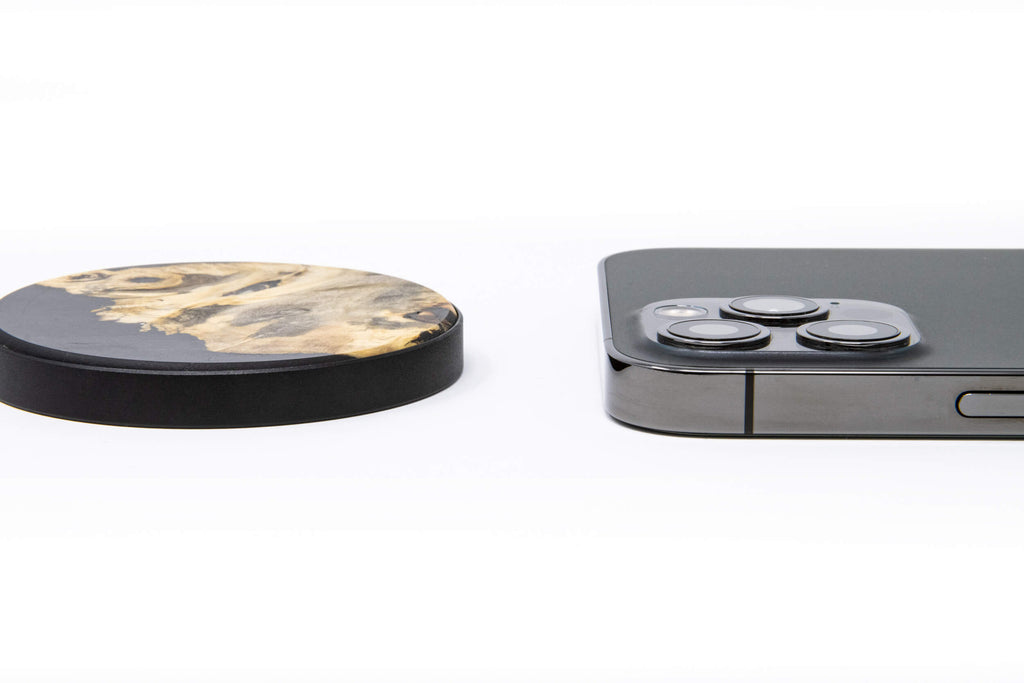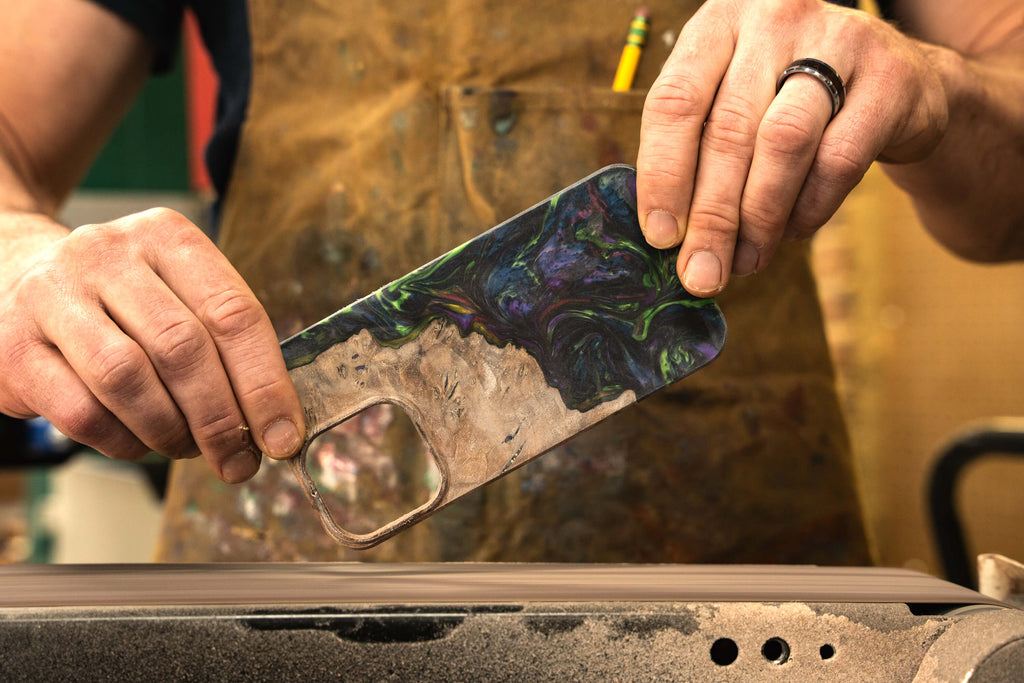
As we shift to an entirely wireless world, two charging technologies lead the way: Qi and MagSafe. Qi is the foundation of wireless charging, guaranteeing a secure magnetic connection across a range of smartphones & other devices. But Apple’s latest evolution of MagSafe, which is built using Qi technology, offers faster charging speeds.
So which one is better: MagSafe or Qi. Here’s a side-by-side comparison of the two wireless charging technologies based on charging speeds, convenience, and case & accessory compatibility.
What is MagSafe Wireless Charging?
MagSafe is a magnetic charging technology that’s natively built into the iPhone 12, 13, 14, and the latest 15 models. First debuted by Apple in 2006 with the launch of the first-generation MacBook Pro, MagSafe utilizes magnets to connect your device to the charger, rather than a traditional USB charging port.
Apple has gone back & forth on charging technology with their MacBooks, switching between MagSafe & USB-Cs. But the adaptive wireless technology looks like it’s here to stay for iPhones.
Inside the smartphone, a series of magnets surround the internal charging coil. These magnets create a strong, precise connection between the charger and compatible devices, which include the latest iPhone models, AirPods, and Apple Watches. You can also connect mag-safe compatible accessories like wallets, car mounts, and battery backs.
The magnets guarantee a stable, reliable charging connection, eliminating the need for fumbling with cables or worrying about misalignment on wireless charging pads. Once connected, your phone is locked into place. But you might argue that your phone “locks” into a regular wired charger or that your current wireless charger works just fine – so what’s the point?
One of the primary advantages of MagSafe charging is its ability to deliver faster charging speeds compared to traditional wireless chargers. And as wireless chargers become the norm, Apple has continued to shine in the area of product convenience & user experience. You can comfortably hold and operate your iPhone while it charges, thanks to the secure magnetic connection. This feature is particularly beneficial for those who rely heavily on their smartphones throughout the day.

What is Qi Wireless Charging?
Qi charging is a wireless technology that’s become an industry standard, offering a convenient and cable-free way to charge your devices. First launched in 2008, Qi chargers have risen in popularity as users gravitate towards wireless systems to power their smartphones, smartwatches, and wireless earbuds.
Like MagSafe, Qi chargers use electromagnetic induction to transfer power from the charging pad to the device. The charger generates an electromagnetic field, and when a Qi-enabled device is placed on the pad, the field induces an electric current in the device, allowing it to charge wirelessly. This eliminates the hassle of dealing with tangled cables and connectors.
One of the key advantages of Qi charging is its universal compatibility. Qi is an open standard, meaning it is the foundation for most wireless chargers. This makes it possible to charge various devices from different brands using the same Qi charger, promoting convenience and interoperability. In fact, MagSafe-compatible iPhones use Qi-based wireless charging coils.
MagSafe vs. Qi Charging: A Side-by-Side Comparison
Charging Speed
Let’s start with MagSafe. With increased output up to 15 watts (W), MagSafe chargers can power your iPhone battery more quickly, from 0% to 100% in about 2 hours. In comparison, Qi chargers take about 2.5 hours to fully power phones from 0% to 100%. We have to give the win to Apple here – but since Qi is the foundation of all wireless charging, we’re optimistic that charging times will continue to improve across the board in the coming years.
Compared to wired chargers, both wireless chargers outperform Apple’s 5W block & lightning cable, but fall short against the 20 W cable, which has a sub-two hour charging time.
Convenience and Ease of Use
The entire premise of wireless charging is convenience – it’s easier to set your phone down on a circular platform than fumble around with a cord & tiny port, especially in the dark.
Qi is the foundation of MagSafe, so there’s no discernible difference between the two in terms of the security of the magnetic connection. Both systems will snap your phone into place, ensuring proper alignment for charging. They also allow you to seamlessly use your phone while it charges, so there’s no major difference there either.
But in terms of compatibility, Qi prevails over Apple. It works with a wide range of devices, including Samsung Galaxy & Google Pixel phones, smartwatches, and wireless headphones. And because MagSafe is based on Qi tech, wireless Qi chargers also work for iPhones. If you happen to share a wireless charging station with someone at home or at work, you’ll have more range with a Qi device. The charging versatility is not reciprocated, MagSafe chargers don’t work with Google Pixel or Samsung Galaxy phones, just iPhones.
Case Compatibility
Wireless charging is great, but not if you have to take your case off every single time you need to charge your phone. As such, you need to make sure that your case is compatible with MagSafe or Qi charging, so that you can properly charge your phone and connect to other accessories like wallets & mounts. Ultimately, the one thing to remember is that in order for the phone to charge properly, the case needs to be thin enough to form the connection between the charger and the phone’s internal battery.
For iPhones, it's recommended to use MagSafe-compatible cases. These cases are specifically designed to work seamlessly with the technology, ensuring a proper magnetic connection and optimal charging performance. Non-compatible cases, or those with bulky designs (think waterproof cases) may interfere with the magnetic connection or hinder the charging efficiency. If you have one of these cases, you may have to remove it whenever you need a battery boost. At Carved, all of our phone cases are Qi & MagSafe-compatible.
Qi chargers are the same way – thick or metal-backed cases can impede the wireless charging process, reducing the efficiency of power transfer between the charger and device. Without a strong connection, your phone will take longer to charge or potentially not charge at all. At Carved, our
When shopping for phone cases, look for labels or specifications indicating compatibility with MagSafe or Qi charging. This way, you can enjoy the benefits of wireless charging without compromising on performance or convenience. If you’re still not sure, check out our Sizing & Compatibility Guides for the latest smartphone models:
Both MagSafe and Qi wireless charging technologies have their own unique advantages. On one hand, MagSafe chargers work faster but are exclusive to the latest iPhone models. Qi, despite taking a bit longer to charge, is the foundation of wireless charging technology – plus, it’s compatible with a wide range of devices.
Ultimately, the choice between MagSafe and Qi charging depends on individual preferences, device compatibility, and the desired charging experience. Regardless of the chosen technology, wireless charging provides convenience, eliminates cable clutter, and simplifies the charging process for a seamless user experience.



